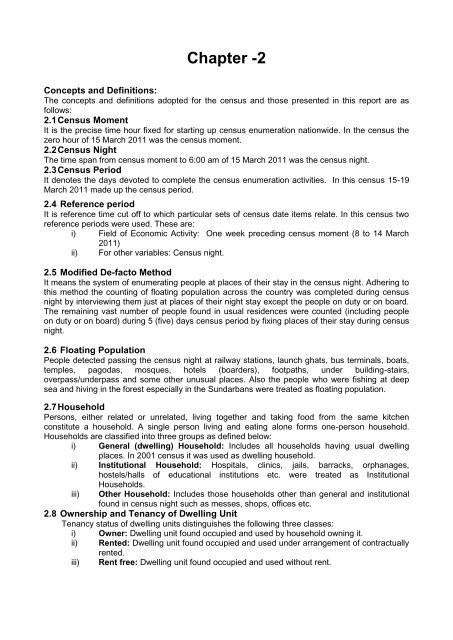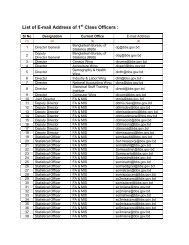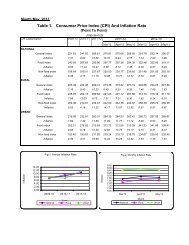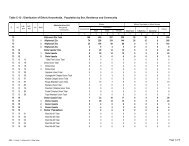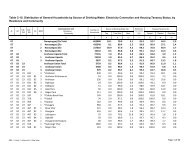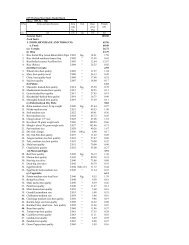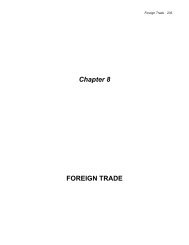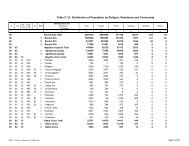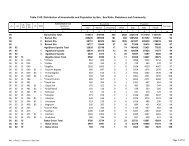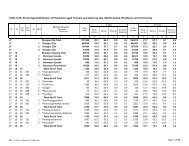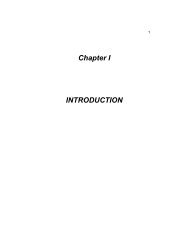Barguna at a Glance.pdf - Bbs.gov.bd
Barguna at a Glance.pdf - Bbs.gov.bd
Barguna at a Glance.pdf - Bbs.gov.bd
You also want an ePaper? Increase the reach of your titles
YUMPU automatically turns print PDFs into web optimized ePapers that Google loves.
Chapter -2<br />
Concepts and Definitions:<br />
The concepts and definitions adopted for the census and those presented in this report are as<br />
follows:<br />
2.1 Census Moment<br />
It is the precise time hour fixed for starting up census enumer<strong>at</strong>ion n<strong>at</strong>ionwide. In the census the<br />
zero hour of 15 March 2011 was the census moment.<br />
2.2 Census Night<br />
The time span from census moment to 6:00 am of 15 March 2011 was the census night.<br />
2.3 Census Period<br />
It denotes the days devoted to complete the census enumer<strong>at</strong>ion activities. In this census 15-19<br />
March 2011 made up the census period.<br />
2.4 Reference period<br />
It is reference time cut off to which particular sets of census d<strong>at</strong>e items rel<strong>at</strong>e. In this census two<br />
reference periods were used. These are:<br />
i) Field of Economic Activity: One week preceding census moment (8 to 14 March<br />
2011)<br />
ii) For other variables: Census night.<br />
2.5 Modified De-facto Method<br />
It means the system of enumer<strong>at</strong>ing people <strong>at</strong> places of their stay in the census night. Adhering to<br />
this method the counting of flo<strong>at</strong>ing popul<strong>at</strong>ion across the country was completed during census<br />
night by interviewing them just <strong>at</strong> places of their night stay except the people on duty or on board.<br />
The remaining vast number of people found in usual residences were counted (including people<br />
on duty or on board) during 5 (five) days census period by fixing places of their stay during census<br />
night.<br />
2.6 Flo<strong>at</strong>ing Popul<strong>at</strong>ion<br />
People detected passing the census night <strong>at</strong> railway st<strong>at</strong>ions, launch gh<strong>at</strong>s, bus terminals, bo<strong>at</strong>s,<br />
temples, pagodas, mosques, hotels (boarders), footp<strong>at</strong>hs, under building-stairs,<br />
overpass/underpass and some other unusual places. Also the people who were fishing <strong>at</strong> deep<br />
sea and hiving in the forest especially in the Sundarbans were tre<strong>at</strong>ed as flo<strong>at</strong>ing popul<strong>at</strong>ion.<br />
2.7 Household<br />
Persons, either rel<strong>at</strong>ed or unrel<strong>at</strong>ed, living together and taking food from the same kitchen<br />
constitute a household. A single person living and e<strong>at</strong>ing alone forms one-person household.<br />
Households are classified into three groups as defined below:<br />
i) General (dwelling) Household: Includes all households having usual dwelling<br />
places. In 2001 census it was used as dwelling household.<br />
ii) Institutional Household: Hospitals, clinics, jails, barracks, orphanages,<br />
hostels/halls of educ<strong>at</strong>ional institutions etc. were tre<strong>at</strong>ed as Institutional<br />
Households.<br />
iii) Other Household: Includes those households other than general and institutional<br />
found in census night such as messes, shops, offices etc.<br />
2.8 Ownership and Tenancy of Dwelling Unit<br />
Tenancy st<strong>at</strong>us of dwelling units distinguishes the following three classes:<br />
i) Owner: Dwelling unit found occupied and used by household owning it.<br />
ii) Rented: Dwelling unit found occupied and used under arrangement of contractually<br />
rented.<br />
iii) Rent free: Dwelling unit found occupied and used without rent.


